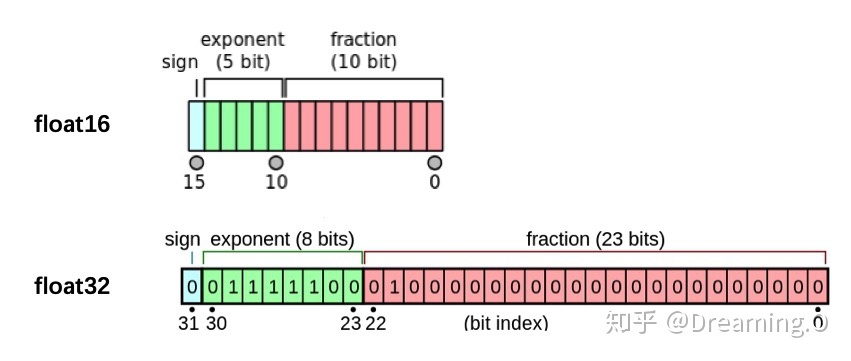Task02:PyTorch进阶训练技巧
0. 教程地址
https://github.com/datawhalechina/thorough-pytorch
1. 自定义损失函数
1.1 函数方式
通过输出值和目标值进行计算,返回损失值
>>> import torch
>>> def my_loss(output, target):
... loss = torch.mean((output - target)**2)
... return loss
...
>>>
1.2 类方式
一般地,Loss函数部分继承自_loss, 部分继承自_WeightedLoss
而_WeightedLoss继承自_loss,_loss继承自 nn.Module
所以,我们自定义的损失函数类就需要继承自nn.Module类
下面以分割领域常见的Dice Loss损失函数举例:
D S C = 2 ∣ X ∩ Y ∣ ∣ X ∣ + ∣ Y ∣ DSC = \frac{2|X∩Y|}{|X|+|Y|} DSC=∣X∣+∣Y∣2∣X∩Y∣
>>> import torch.nn as nn
>>> class DiceLoss(nn.Module):
... def __init__(self, weight=None, size_average=True):
... super(DiceLoss,self).__init__()
... def forward(self, inputs, targets, smooth=1):
... inputs = F.sigmoid(inputs)
... inputs = inputs.view(-1)
... targets = targets.view(-1)
... intersection = (inputs * targets).sum()
... dice = (2.*intersection + smooth)/(inputs.sum() + targets.sum() + smooth)
... return 1 - dice
...
>>>
还有一些其他的常用Loss,如BCE-Dice Loss:
>>> class DiceBCELoss(nn.Module):
... def __init__(self, weight=None, size_average=True):
... super(DiceBCELoss, self).__init__()
... def forward(self, inputs, targets, smooth=1):
... inputs = F.sigmoid(inputs)
... inputs = inputs.view(-1)
... targets = targets.view(-1)
... intersection = (inputs * targets).sum()
... dice_loss = 1 - (2.*intersection + smooth)/(inputs.sum() + targets.sum() + smooth)
... BCE = F.binary_cross_entropy(inputs, targets, reduction='mean')
... Dice_BCE = BCE + dice_loss
... return Dice_BCE
...
>>>
Jaccard/Intersection over Union (IoU) Loss:
>>> class IoULoss(nn.Module):
... def __init__(self, weight=None, size_average=True):
... super(IoULoss, self).__init__()
... def forward(self, inputs, targets, smooth=1):
... inputs = F.sigmoid(inputs)
... inputs = inputs.view(-1)
... targets = targets.view(-1)
... intersection = (inputs * targets).sum()
... total = (inputs + targets).sum()
... union = total - intersection
... IoU = (intersection + smooth)/(union + smooth)
... return 1 - IoU
...
>>>
Focal Loss:
>>> ALPHA = 0.8
>>> GAMMA = 2
>>> class FocalLoss(nn.Module):
... def __init__(self, weight=None, size_average=True):
... super(FocalLoss, self).__init__()
... def forward(self, inputs, targets, alpha=ALPHA, gamma=GAMMA, smooth=1):
... inputs = F.sigmoid(inputs)
... inputs = inputs.view(-1)
... targets = targets.view(-1)
... BCE = F.binary_cross_entropy(inputs, targets, reduction='mean')
... BCE_EXP = torch.exp(-BCE)
... focal_loss = alpha * (1-BCE_EXP)**gamma * BCE
... return focal_loss
...
>>>
2. 动态调整学习率
2.1 官方API
-
lr_scheduler.LambdaLR
-
lr_scheduler.MultiplicativeLR
-
lr_scheduler.StepLR
-
lr_scheduler.MultiStepLR
-
lr_scheduler.ExponentialLR
-
lr_scheduler.CosineAnnealingLR
-
lr_scheduler.ReduceLROnPlateau
-
lr_scheduler.CyclicLR
-
lr_scheduler.OneCycleLR
-
lr_scheduler.CosineAnnealingWarmRestarts
我们在使用官方给出的torch.optim.lr_scheduler时,需要将scheduler.step()放在optimizer.step()后面进行使用。
2.2 自定义scheduler
通过自定义函数adjust_learning_rate来改变param_group中lr的值来实现
>>> def adjust_learning_rate(optimizer, epoch):
... lr = args.lr * (0.1 ** (epoch // 30))
... for param_group in optimizer.param_groups:
... param_group['lr'] = lr
...
>>>
调用过程如下:
def adjust_learning_rate(optimizer,...):
...
optimizer = torch.optim.SGD(model.parameters(),lr = args.lr,momentum = 0.9)
for epoch in range(10):
train(...)
validate(...)
adjust_learning_rate(optimizer,epoch)
3. 模型微调
3.1 概念
通过对已经训练好的模型进行参数调整,使其用于新数据集训练
3.2 流程
-
拿到源模型,可以下载或者自行在源数据集训练
-
将源模型输出层外所有的结构和参数复制到目标模型
-
重构目标模型的输出层,并随机初始化改成的对应参数
-
使用目标数据集训练目标模型
3.3 图示

3.4 实践
>>> # 使用requires_grad=False冻结部分网络层,只计算新初始化的层的梯度
>>> def set_parameter_requires_grad(model, feature_extracting):
... if feature_extracting:
... for param in model.parameters():
... param.requires_grad = False
...
>>> import torchvision.models as models
>>> # 冻结参数的梯度
>>> feature_extract = True
>>> # 通过传入pretrained参数,决定是否使用预训练好的权重
>>> model = models.resnet50(pretrained=True)
Downloading: "https://download.pytorch.org/models/resnet50-19c8e357.pth" to C:\Users\Hunter-G/.cache\torch\hub\checkpoints\resnet50-19c8e357.pth
100%|██████████████████████████████████████████████████████████████████████████████████████████| 97.8M/97.8M [01:23<00:00, 1.23MB/s]
>>> set_parameter_requires_grad(model, feature_extract)
>>> # 修改模型
>>> num_ftrs = model.fc.in_features
>>> model.fc = nn.Linear(in_features=512, out_features=4, bias=True)
>>> model.fc
Linear(in_features=512, out_features=4, bias=True)
>>>
在训练过程中,model仍会回传梯度,但是参数更新只会发生在fc层。
4. 半精度训练
4.1 概念
PyTorch默认的浮点数存储方式用的是torch.float32
但使用torch.float16格式的信息也不会影响结果
由于数位减了一半,因此被称为“半精度”,具体如下图:

4.2 实践
-
导入相关的包
from torch.cuda.amp import autocast -
装饰模型
在定义模型时,用autocast装饰模型中的forward函数
@autocast()
def forward(self, x):
...
return x
- 训练过程
for x in train_loader:
x = x.cuda()
with autocast():
output = model(x)
...
半精度训练主要适用于数据本身的size比较大(比如说3D图像、视频等)。
当数据本身的size并不大时(比如手写数字MNIST数据集的图片尺寸只有28*28)
使用半精度训练则可能不会带来显著的提升。






















 8050
8050











 被折叠的 条评论
为什么被折叠?
被折叠的 条评论
为什么被折叠?








